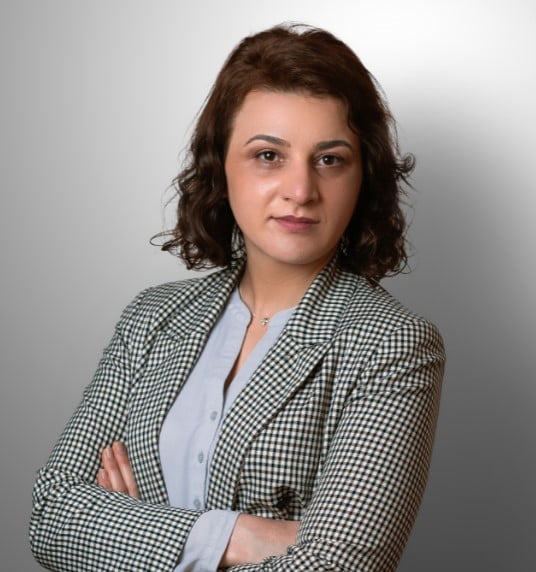On 17 October 2015, on air on Rustavi 2 TV, the Deputy Minister of Labour, Health and Social Affairs, Zaza Sopromadze, stated: "State-funded care was not available for citizens aged 18 years until their retirement. Today, this part of the population receives almost the same medical care as vulnerable groups."
FactCheck took interest in the statement and verified its accuracy.
As of 2012, state health insurance is available for citizens unable to afford healthcare. According to the 2009 Ordinance N218 of the Government of Georgia, state health insurance covers the population living below the poverty line, internally displaced persons living in compact settlements, children without care and national artists. The 2012 Ordinance N165 of the Government of Georgia expanded state insurance and included children up to the age of five years, old age pensioners, students, disabled children and children with visible disabilities.
Additionally, by 2012 the state started running (and is still running) different targeted healthcare programmes dealing with infectious diseases, tuberculosis, AIDS, diabetes, drug addiction, dialysis, kidney transplantation, emergency care, a village doctor programme and others.
Until 2013, healthcare funding in Georgia was targeted and not universal. Therefore, state assistance was designated for those who belonged to vulnerable groups and could not afford to pay for healthcare expenses. This group of the country’s socially vulnerable included persons of any age.
In February 2013, the government launched the Universal Healthcare Programme which covered every citizen of Georgia who did not possess any other health insurance. From 1 July 2013, the second stage of the Universal Healthcare Programme was started with the spectrum of medical services envisaged within becoming larger.
In 2014, those individuals who were entitled to state health insurance by the aforementioned Ordinance N218 and Ordinance 165 of the Government of Georgia were switched to the Universal Healthcare Programme.
One of the biggest challenges for Georgia’s Universal Healthcare Programme is its financial risk. The programme’s expenditures have been rising rapidly upon an annual basis. Both in 2014 and in 2015, its budget was insufficient and required a budget correction and the allocation of an additional sum of money (see FactCheck’s article on this topic).
Of important note is that against the background of the continually increasing prices of medication which constitutes more than 50% of the country’s total healthcare expenditures, the Universal Healthcare Programme does not envisage the reimbursement of the costs of medicine. The 2014 Research on Healthcare Services and Expenditures in Georgia report, which was carried out with the assistance of the World Health Organization, USAID and the World Bank, demonstrates that healthcare in Georgia became more affordable after the launch of the Universal Healthcare Programme. However, the amount of healthcare expenses paid directly by the population is still very high and equals 62%. Even though the total volume of direct payments has decreased, the amount of direct payments for citizens within the poorest groups and in villages has increased.
Today, this is the picture under the Universal Healthcare Programme: state money is used by a well-off individual (who could afford to pay for his own healthcare expenses) whilst state money is insufficient for the healthcare expenses of a poorer individual who still remains under risk. Therefore, the aim to ensure the maximum protection of each and every citizen (the principle of universality) can only be achieved in a country which has an advanced economy and enough budget capacity to lower the financial risks of healthcare for its citizens. In the case of Georgia, such an approach remains inefficient.
Conclusion
As of 2012, state health insurance is being used by those citizens for whom healthcare was not affordable. The state has also been carrying out different targeted healthcare programmes.
To assert that the population from the age of 18 years until their retirement was left beyond the attention of the state as concerns healthcare is an exaggeration. State healthcare insurance indeed covered students and those individuals living below the poverty line. Additionally, there were and are other targeted healthcare programmes which could and can be used by any citizen of Georgia in the case of need.
After launching the Universal Healthcare Programme, healthcare has in fact become more affordable for the population. However, the share of direct payments (62%) made by citizens for their healthcare expenditures is still high. As well, the share of direct payments for medicine increased for the country’s poorest groups and for those living in villages.
Therefore, FactCheck concludes that Zaza Sopromadze’s statement is MOSTLY FALSE.

State-funded care was not available for citizens aged 18 years until their retirement. Today, they receive almost the same medical care as vulnerable groups
16/11/2015
Mostly False
In the statement is the elements of the truth, but the important facts that could have made other impressions
Persons
-

“Caring for emigrants is a priority of o...
FalseThe statement is inaccurate -

“The average teacher salary increased by...
Mostly TrueThe application is accurate, but requires additional information and/or definition -

“Passenger traffic at airports has incre...
Mostly TrueThe application is accurate, but requires additional information and/or definition



